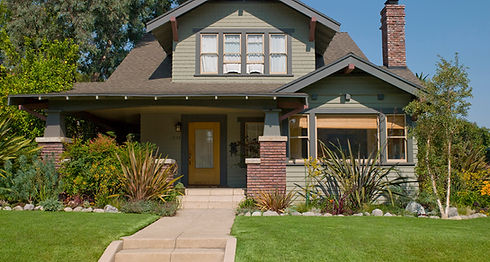Most common reasons for sloping floors.
- Eric F. Wheeler
- Feb 29, 2024
- 2 min read
The Home Inspector comes across sloping floors often in his inspections on older homes in Central Alabama. Most of these homes are on crawlspaces or basements. Several factors can contribute to a home's floors sloping, and identifying the root cause is essential for proper repair and prevention of further damage. Here are some common reasons for sloping floors in homes:

Foundation Settlement: One of the primary causes of sloping floors is foundation settlement. Over time, a home's foundation may settle unevenly due to soil movement, poor soil compaction, or inadequate foundation support. As the foundation settles, it can cause portions of the floor to slope or sink.
Structural Issues: Structural problems such as damaged or deteriorating floor joists, beams, or support columns can also lead to sloping floors. Structural issues may result from water damage, termite infestation, poor construction practices, or simply the natural aging of the building materials.
Poor Construction: In some cases, sloping floors may be the result of poor construction practices or insufficient structural support during the building process. Improperly installed floor joists or subflooring can lead to unevenness over time.
Water Damage: Water infiltration from plumbing leaks, excessive moisture, or flooding can weaken the structural integrity of the floor system and cause wood components to warp, rot, or decay. Water damage can lead to uneven floors as the affected areas lose their structural stability.
Soil Conditions: The type and condition of the soil beneath a home can affect its stability and lead to sloping floors. Expansive soils, which expand and contract with changes in moisture content, can exert pressure on the foundation and cause it to shift unevenly over time.
Settling of Subfloor Materials: In some cases, the subfloor materials themselves may settle or shift over time, leading to sloping or uneven floors. This can occur if the subflooring materials were not properly installed or if they were subjected to excessive weight or moisture.
Natural Causes: In regions prone to seismic activity or geological instability, natural events such as earthquakes or land subsidence can cause the ground beneath a home to shift, leading to sloping floors.
Addressing sloping floors often requires a thorough inspection by a qualified structural engineer or contractor to determine the underlying cause. Depending on the severity and cause of the sloping, repairs may involve foundation stabilization, structural reinforcement, subfloor replacement, or other corrective measures. It's important to address sloping floors promptly to prevent further damage to the home and ensure its structural integrity and safety.






























